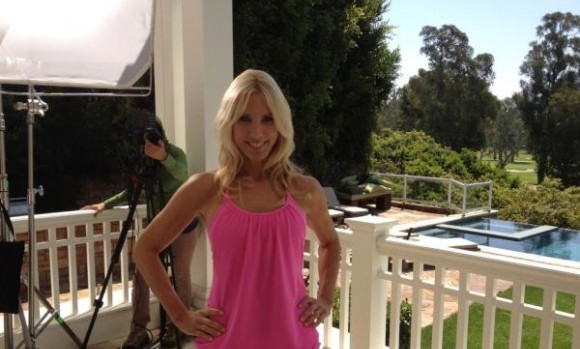ATLX Contributor, Downtown LA’s Master Trainer- Jesse Gaynor
Are you trying to be healthy and/or lose weight and confused as to which diet or eating plan is right for you? You’re not alone. The amount of diets to choose from can be overwhelming. In the past year alone, I’ve counted over a dozen “new” plans, and that’s in addition to the hundreds that are already in use.
If you want lasting results and optimum health, do not pick a diet plan based on how persuasive, charismatic or even how knowledgeable the author is. Just like a good politician, most “nutrition experts” know how to say the right thing, at the right time, in the right way, in order to make you trust that their plan is the best. Many will back up their claims by finding research studies that “fit” the message they are conveying and add a sense of legitimacy. The funny thing is that most of them – with a bit of embellishment – are telling the truth.
 How can they all be right? They are saying completely different things!
How can they all be right? They are saying completely different things!
In my time creating diet plans, I’ve heard just about every diet-related question:
Is it low in carbohydrates, or aren’t carbs good for you? I have a friend who lost a lot of weight using a high-fat, high-protein diet…should I try that? I need to lower my sugar, right? I feel like I should just go vegan. I’ve heard protein and vegetables are the two things everyone should be eating to lose weight, but isn’t too much protein bad for you? Do I need to monitor my calories or can I just eat healthier? And what about fruit? That’s a healthy way to lose weight, right?
Any of these questions sound familiar? Well, here’s the simple guide to picking your ideal diet to lose fat, gain muscle tone, have more energy and become healthier:
The first thing to realize is that no two people are exactly the same. We all have a different physiology, and thus, we all require a different set of nutrition. Following a high-fat diet may work great for some. They may lose fat, think clearer, require less sleep and have more energy. But the same diet could have a devastating impact on another person. I’ve seen people follow high-density paleo diets and give themselves horrible digestive issues, increase their waistline and seriously compromise their long-term health. How is this possible? Because the latter group’s bodies weren’t meant to process those foods.
Step 1: Figure out your body type
Extreme ectomorph
Growing up, were you very skinny? Did you even try to actively gain weight? Were you unsuccessful most of the time?
Ectomorph
Skinny? Did you seem to be able to eat what you wanted without gaining weight until you were an adult? Do you thrive on activity (feel better)?
Ecto/mesomorph
The same as ectomorph, but you have a slightly bigger frame and have never found it difficult to gain muscle or lose body fat (I hate you!).
Mesomorph
This is the ideal body type in sports. You grew up big, tall, muscular and generally exceled in athletics.
Meso/endomorph
Meso/Endomorphs are similar to mesomorph, but you tended to be a bit more “husky” growing up. You always had a little bit of fat on you, but not enough where anyone would call you overweight.
Endomorph
You’ve always weighed more, and as you age it seems that if you even look at the wrong food, you gain weight.
Step 2: Genetic history
Try to classify your family in one of the above categories. You mother and father are the main predictors of your body type, but you can look at your general family (grandparents, aunts, uncles, cousins) and see how fit, average or overweight they are.
Step 3: Activity Level
Sedentary
You’re generally not active. You work a desk job, go home and like to relax. You may exercise a couple times a week, but your general daily lifestyle is pretty low-activity.
Moderate
You have a job or life that requires you move around a lot. You either do a lot of walking or frequent a gym regularly.
Active
You move around a lot. Whether you’re the person who seems to have the leg that’s constantly moving up and down or you have a job where you’re active all the time, you always seem to be moving. Or if exercising is a daily routine for you, you’re active.
Extremely active
You have a highly active job like trainer, bike messenger or professional athlete. You are constantly working out, and you are always doing something active.
Ok, now here’s the diet part. I’m going to break it down for three body types (not all the different variations I mentioned above).
If you are an active ectomorph
Fat should very rarely enter your body. This includes healthy fats like avocado, olive oil and nuts. You should focus on eating a moderate amount of protein, but not too much meat, eggs and protein powder. The primary source of your intake should be whole natural sources of carbohydrates like vegetables (especially root vegetables), healthy whole grains like quinoa and brown rice and a bit of fruit.
If you are a semi-active mesomorph
You hit the genetic lottery! A moderate amount of every nutrient is good for you. A good rule of thumb is 35-percent protein, 35-percent carbohydrates and 30-percent fat. Don’t expect to lose weight by doing nothing, though. You still need to make healthy choices and do the right kind of exercise.
If you are a mostly sedentary endomorph
You’re always fighting against your genetics. It sucks…I know. The main thing you need to know is that sugar and carbohydrates are not your friends. They may seem attractive and give you energy after you sit for a meal, but they are going to make you fat, slow, and out of shape! Prioritize healthy fats and proteins. Grass-fed meats, pasture-raised eggs, nuts, healthy oils, avocado and coconut are all amazing sources of foods for you.
Lastly, remember to listen to your body. If you find that eating a certain way is not agreeing with your energy, digestion, cognitive thought or athletic performance, then forget about what people have told you. Try something else!
Well, there it is. Remember we’re not all the same person. We have different body chemistries, and as such, require different food. Also, as a final note, 90 percent of us don’t fit into one of the three descriptions above. Most of us are some variation of the three.
 ATLX The only sports entertainment television and digital media network fully devoted to everyday athletes, athletic lifestyle and athletic culture.
ATLX The only sports entertainment television and digital media network fully devoted to everyday athletes, athletic lifestyle and athletic culture.





